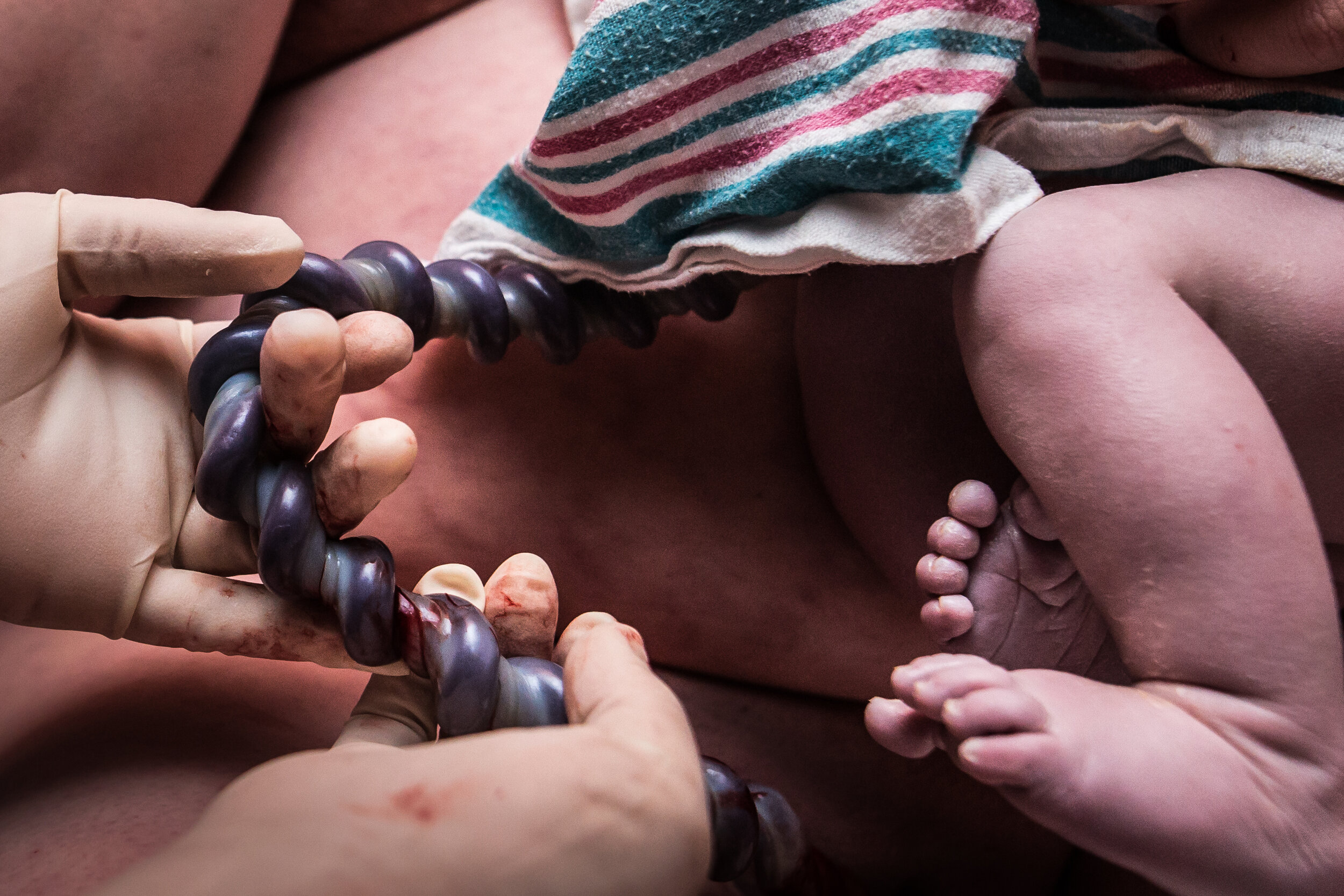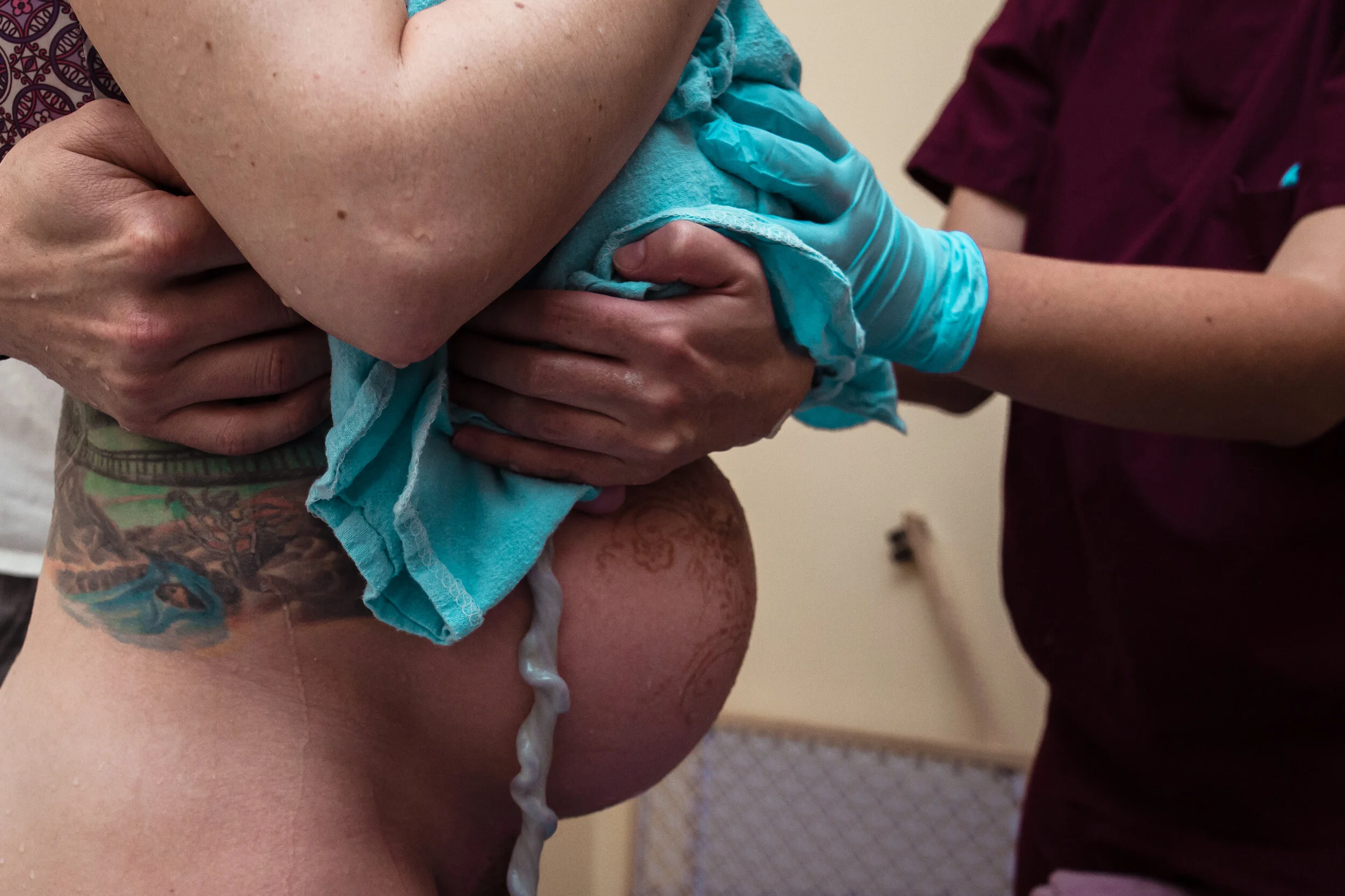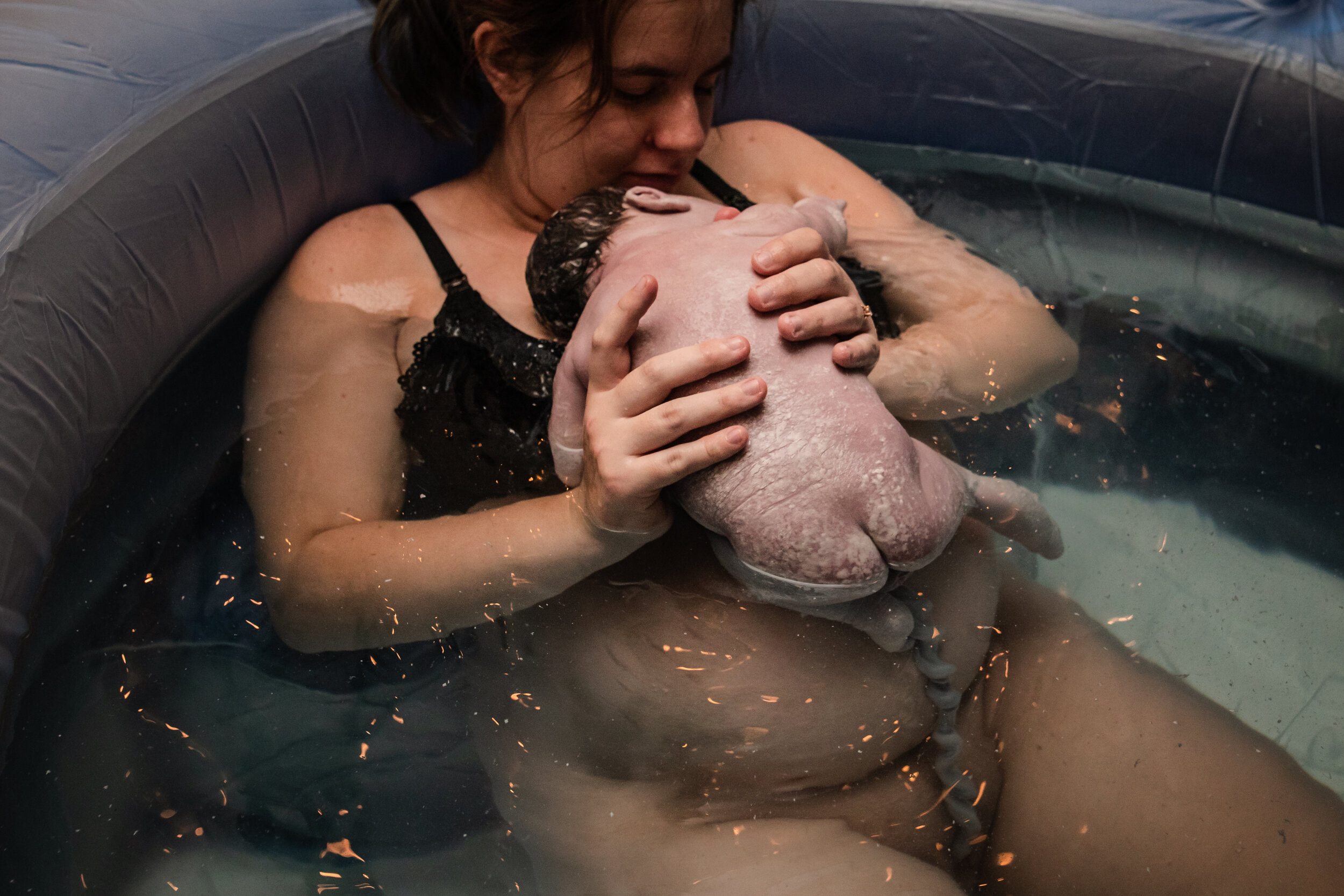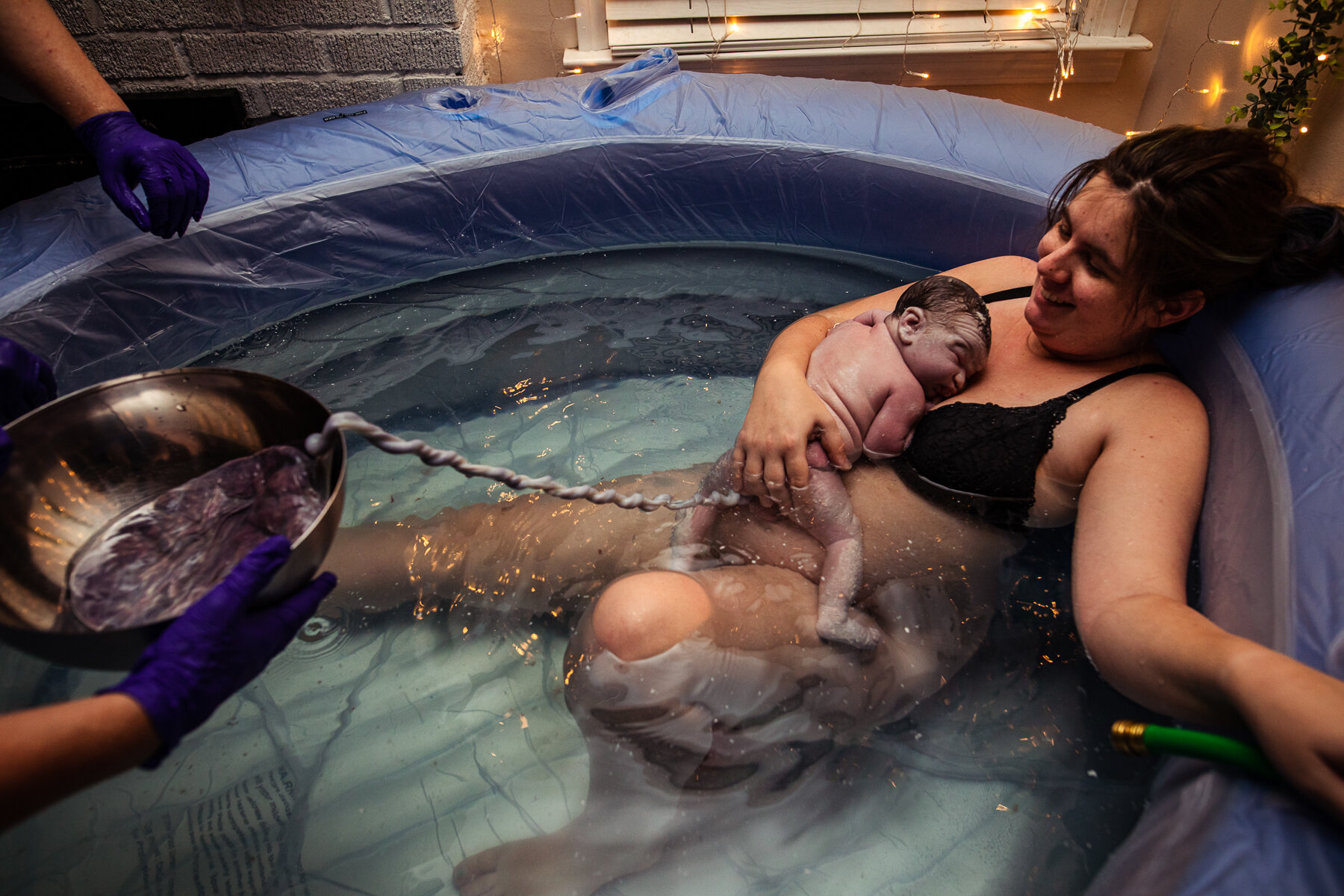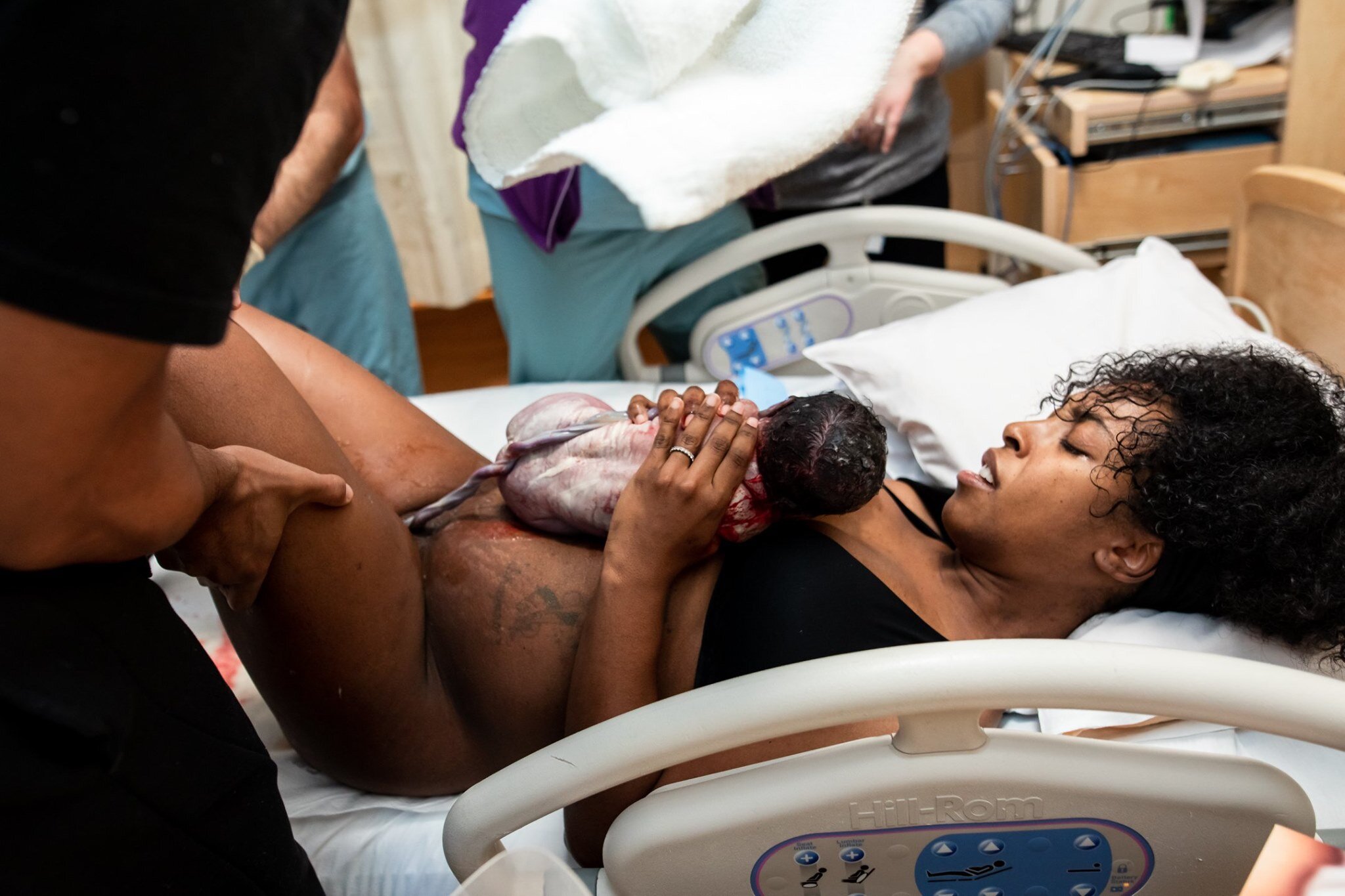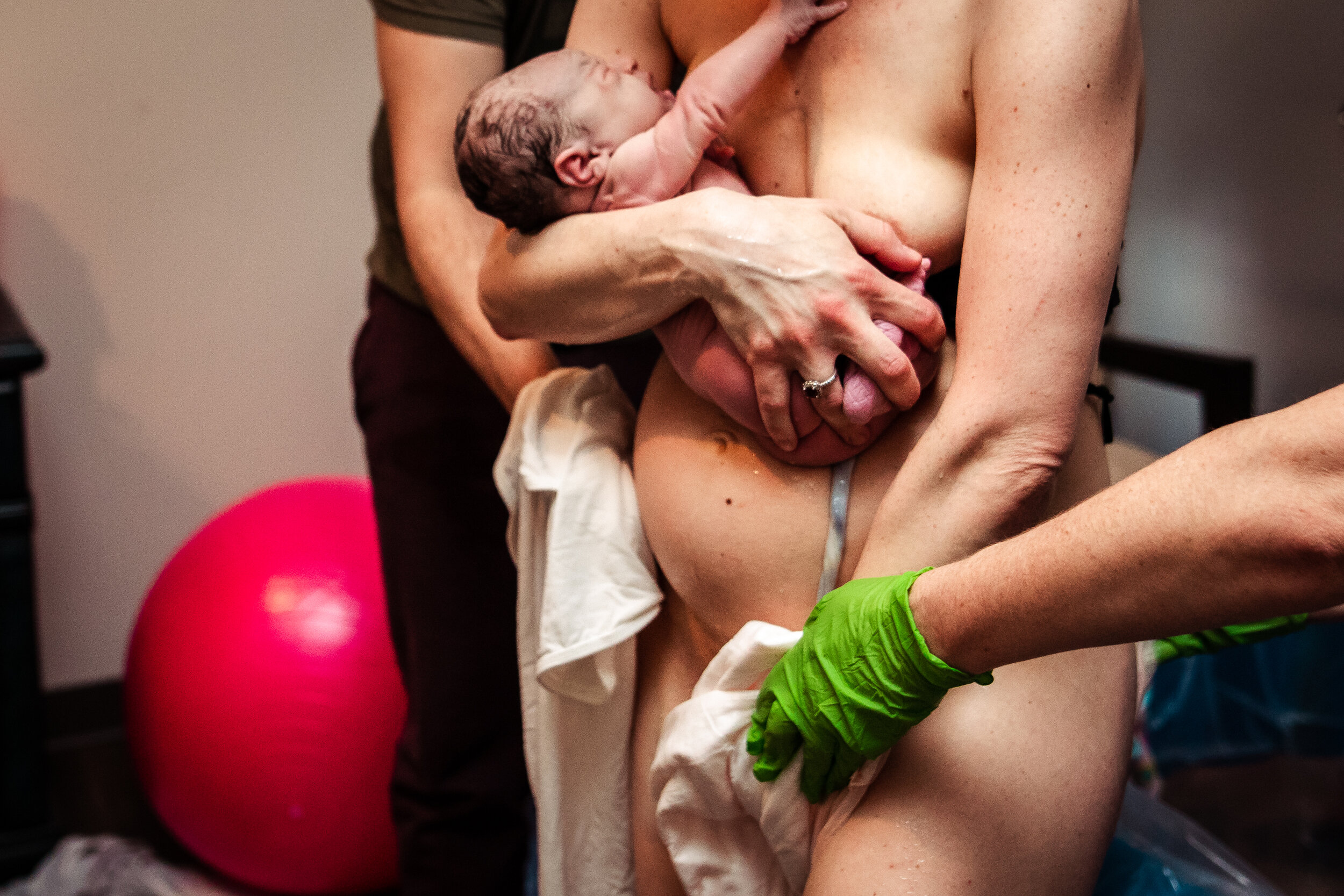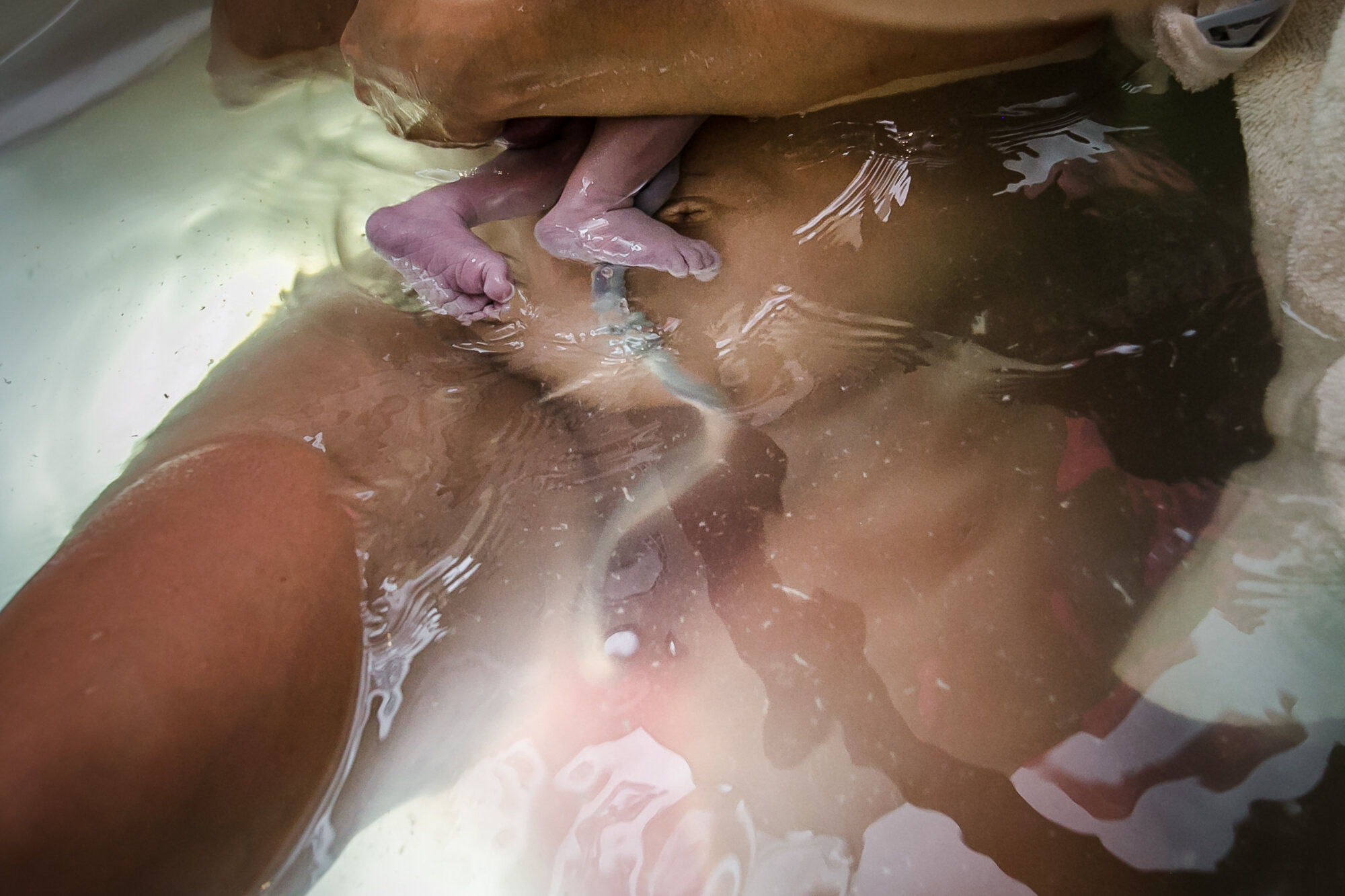Umbilical Cords - Waiting for White
There has been a big push in the birth world in the last few years to educate families and even birth professionals to wait for the umbilical cord to turn white before clamping and cutting. While most midwives and some OB’s have been following this practice for years, during (most) hospital births, this is not the norm. Evidence shows that waiting to cut the umbilical cord for a mere 90 seconds would increase stem cells and iron stores in babies, which are SO important in the first 6 months + of life. At the moment of birth, 1/3 of the baby’s blood is still outside of their body, in the placenta and cord.
First, we must start thinking of the blood in the placenta and the cord not as ‘cord’ blood, but baby’s blood. This blood is so important that we have cord banks set up, so that a person can safely ‘bank’ that blood. If hospitals would routinely cut the cord at the Optimal Time, the baby would have all/most of the necessities it needs from the cord and placenta, the way that it was intended by nature.
You might be wondering why healthcare professionals started clamping and cutting the cord early. (1) ”In the 1960’s with the advent of an oxytocic drug used to shorten the third stage of labor (after the baby is born until delivery of the placenta) immediate (premature) cord clamping became routine practice despite the knowledge that this practice deprived the baby of approximately 30% of their intended blood volume and despite no evidence to say this practice is safe. On the contrary research shows that this practice is not safe and there can be long term negative effects.”
(2) Some of the benefits of Optimal Cord Clamping are:
Increases in
• Haematocrit
• Haemoglobin
• Blood pressure
• Cerebral oxygenation
• Red blood cell flow
• Breast feeding duration
• Stem Cell volume
Delayed cord clamping also decreases many risks including:
• Intraventricular haemorrhage
• Necrotizing enterocolitis
• Late-onset sepsis
• Need for blood transfusions for low b/p or anemia
• Need for mechanical ventilation
• Umbilical infections
(1, 2: Information from Amanda Burleigh, Wait For White)
I’ve seen blatant misinformation given in hospital births. Early on in my career, a family advocated for cord clamping and the hospital physician agreed. But once the baby was born, the physician would not give the baby to the mom to hold until the cord was cut because he told the family that ‘if you don’t hold the baby below the placenta, the blood will flow OUT of the baby.’ Which is not true at all!
There has not been any evidence that premature (immediate) cord cutting is beneficial. Only evidence that supports its’ harm. It’s time to start speaking out about delayed cord clamping for your own birth. Your baby needs their full volume of blood supply!
If you are having a hospital birth and you would like to delay cord clamping, it is your right! Speak to your medical provider about your wishes before birth and even during labor (or have your partner/birth support do this).
Ask your provider if they support delayed cord clamping. Tell your provider this is something you desire for your birth. Write it into your birth plan. Tell your nurse your wishes and even ask your partner to be sure the cord doesn’t get cut too quickly. You will be enjoying your baby and probably won’t think about that in the moment.
Be sure to take some time to appreciate your own beautiful cord and placenta. Your body grew all of this! You can touch your cord and feel the pulsing blood. It’s incredible! Take a moment to look at these photos and see the difference in cords that are FULL of blood vs. a cord that is white and empty.
Look at all that blood! This cord didn’t stop pulsing for a LONG time after birth. Can you imagine if the baby didn’t receive all of that blood?
This baby is still blue and transitioning from water-world to earthside. You can see her placenta still blue and pulsing, as she oxygenates, she will turn more pink and the cord will turn white.
Check out this incredible cord! It was so long and full of blood even after the placenta was birthed.
This mama delivered her baby, hung out in the tub for a good 10 minutes, got out and delivered the placenta about 30 minutes after and the placenta was STILL pulsing.
These images show a white cord. Both babies were attached to their cords for at least an hour.
I’ll leave you with this quote, I remember hearing it during my own Childbirth Education Course and realized the importance of delayed cord clamping.
We’ve long known that immediate umbilical cord clamping and cutting could be harmful. Charles Darwin’s grandfather Erasmus Darwin – a well-known doctor – summarized the risks back in 1801:
Very injurious to the child is the tying of the navel string too soon. It should be left till all pulsation in the cord ceases. Otherwise the child is much weaker than it ought to be, a portion of the blood being left in the placenta, which ought to have been in the child.
If you’d like to learn more about delayed cord clamping and it’s benefits, here are some more links.
Evidence Based Birth - Delayed Cord Clamping
Mother Rising

